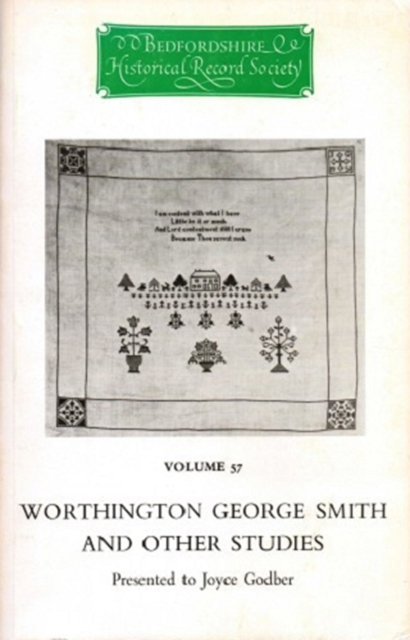Book contents
- Frontmatter
- Contents
- Contributors
- Illustrations
- Foreword
- Bedfordshire Chapelries: An Essay In Rural Settlement History
- Bedfordshire Heraldry: A Conspectus
- Middlemen In The Bedfordshire Lace Industry
- Joshua Symonds, An Eighteenth-Century Bedford Dissenting Minister
- The 1830 Riots In Bedfordshire - Background and Events
- A Bedfordshire Clergyman of The Reform Era and His Bishop
- Worthington George Smith
- Aspects of Anglo-Indian Bedford
- The 1919 Peace Riots In Luton
- Index
- Miscellaneous Endmatter
Joshua Symonds, An Eighteenth-Century Bedford Dissenting Minister
Published online by Cambridge University Press: 03 August 2023
- Frontmatter
- Contents
- Contributors
- Illustrations
- Foreword
- Bedfordshire Chapelries: An Essay In Rural Settlement History
- Bedfordshire Heraldry: A Conspectus
- Middlemen In The Bedfordshire Lace Industry
- Joshua Symonds, An Eighteenth-Century Bedford Dissenting Minister
- The 1830 Riots In Bedfordshire - Background and Events
- A Bedfordshire Clergyman of The Reform Era and His Bishop
- Worthington George Smith
- Aspects of Anglo-Indian Bedford
- The 1919 Peace Riots In Luton
- Index
- Miscellaneous Endmatter
Summary
From 1766 to 1788 the Rev. Joshua Symonds occupied the pulpit of the important Old Meeting at Bedford, the Independent church of which John Bunyan, author of The Pilgrim’s Progress, had once been pastor. The source-material for the life of Symonds is considerable and is more than adequate to give a picture of the personal, family and church life of this eighteenth-century Bedford Dissenting minister. It is convenient to consider separately first the personal and family life of Symonds and then the years of Symonds’ pastorate of the Bedford church.
PERSONAL AND FAMILY LIFE
Symonds was born at Kidderminster on 23rd January 1739, the son of an apothecary, and it was originally the intention that he should become a farmer. From the ages of 14 to 21 he lived at various farms in Shropshire, Herefordshire and Worcestershire. In Worcestershire he joined the Independent church at Bromsgrove, felt moved to study for the Independent ministry, and was accepted for a course of study in London at the academy of Dr Conder in Mile End: while at the academy he became a member of Mr Brewer’s Independent church at Stepney.
In March 1766 he preached for the first time at the Old Meeting, Bedford and on the 12th of that month the famous John Newton, curate of Olney, Bucks., wrote in his Diary ‘a visit from Mr Symonds. He is supplying a vacancy at Bedford. I shall be glad if the Lord sees fit to fix him there. I think him a sensible, spiritual, humble young man, and believe he would make an agreeable and useful neighbour. Heard him preach in the evening from John xii, 21’.
Symonds was solemnly set apart as the pastor of the Bedford church on 4th August 1767 and three months later was united in marriage with Elizabeth Kingsley, daughter of a London druggist. Elizabeth had been recommended to marry Symonds by John Newton the curate of Olney, in a letter which still survives and part of which reads: ‘I hope you will not be displeased with me for encouraging my dear friend Mr Symonds to wait upon you.
- Type
- Chapter
- Information
- Worthington George Smith and Other Case Studies , pp. 59 - 74Publisher: Boydell & BrewerFirst published in: 2023

